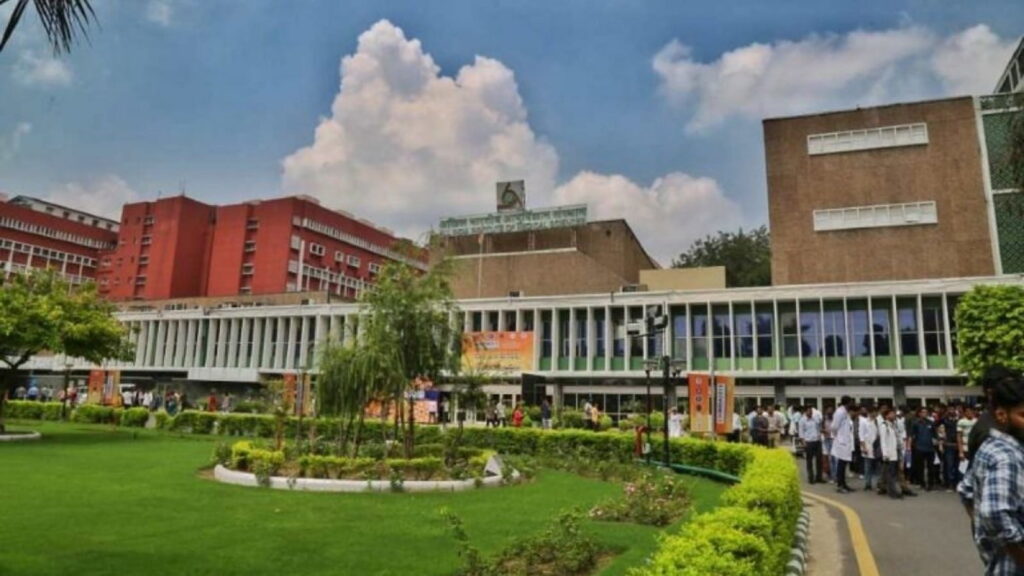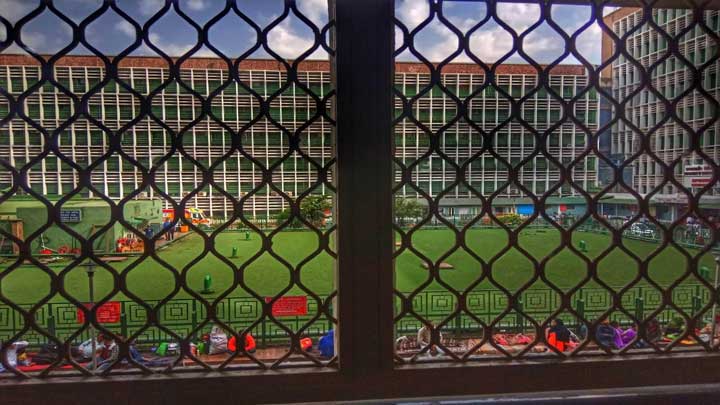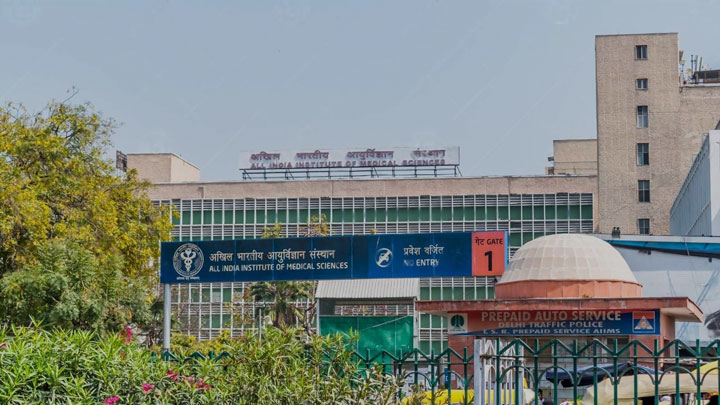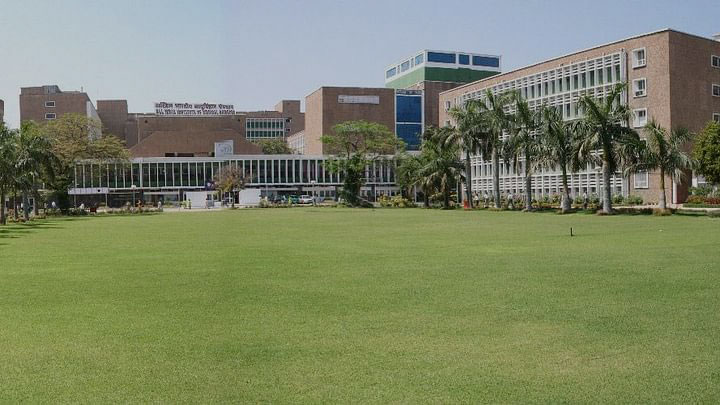Doctor of Medicine (MD)
After receiving an MBBS, a postgraduate specialty programme known as MD, or Doctor of Medicine, can be pursued. It gives the candidate the opportunity to learn in-depth knowledge and hands-on experience on a variety of subjects, such as anatomy, radiotherapy, general medicine, etc. It facilitates the organising of efficient medical diagnosis and treatment plans.
MD eligibility requirements: Medical school is one of the most sought-after degrees, requiring years of study and training. After receiving their MBBS and finishing an internship at a recognised medical college, candidates can go on to earn an M.D. It’s a three-year programme with specialised training.
Competencies needed to become a doctor: For three years, the MD programme is offered. The whole course is divided into six two-year semesters. All of the following are heavily weighted throughout the course: lectures, practical work, seminars, research and thesis work, oral exams, and group discussions.




A successful MD must possess the following essential skills:
Diagnosis Skill: the ability to deduce the cause of a disease from its symptoms
Interpersonal Skill: the ability to build rapport with patients and boost their self-esteem
Communication Skill: You need to be a skilled communicator to interact with the patient and his family.
Time Management Skill: ability to work under pressure and long hours, as well as punctuality
Perseverance and Endurance: Being able to spend hours with patients and listen to them patiently
Team Working Skill: the ability to work cooperatively with technicians, specialists, and other medical professionals
Problem Solving Skill and Critical Thinking: the ability to oversee a difficult circumstance and carry out the required remedial measures to relieve the patient
Use of modern treatment techniques: must be informed about the latest developments in medicine and available treatment options.
MD Course Structure
The MD programme requires a three-year commitment. The course is completed in six semesters, two semesters per year. Over the course of the semester, lectures, practical work, seminars, research and thesis work, oral exams, and group discussions are all prioritised.
| Semester 1 | Semester 2 |
|---|---|
| Applied knowledge of fundamental sciences | Combined clinical epidemiology and biostatistics |
| Overview of diseases in general medicine | Procedures and investigation for diagnostics |
| Current developments in medicine |
| Semester 3 | Semester 4 |
|---|---|
| Observing patients who are extremely sick | Capacity to conduct research |
| Advising clients and family members | Management of ward patients |
| Capacity to instruct undergraduate pupils | OPD patient care |
| Semester 5 | Semester 6 |
|---|---|
| Presentations on both long and short topics | Journal conferences |
| Discussions, case presentations, and ward rounds | PG case presentation skills |
| Clinic-pathological conferences and Clinical-radiological | Research review |
Doctorate of Medicine (MD) Courses
Graduates of the MD course possess a solid grasp of the theoretical, clinical, and practical aspects of the pitch in addition to training in research methodology and a positive communication style. The course’s objective is to provide students with a comprehensive understanding of the whats and hows of training them to diagnose and handle any situation related to their area of expertise.
| Specialisation | Subject | Details |
|---|---|---|
| Radiodiagnosis | Paediatric Radiology Emergency Radiology Interventional Radiology Musculoskeletal Radiology Gastrointestinal Radiology Vascular Radiology Urology Neurology | Radiation therapy and diagnostic testing are also included in this specialty. The primary responsibility of this position is to analyse diagnostic tests, including computed tomography (CT), magnetic resonance imaging (MRI), ultrasound, and X-rays. |
| General Medicine | Diseases concerning General Medicine Diagnostic investigation and procedures Research review Biostatistics and clinical epidemiology Applied basic science knowledge | Students can meet community needs with the help of this course. The speciality requires close monitoring. Postgraduates in general medicine practise emergency, critical care, ambulatory, and inpatient care. |
| Dermatology | Venereology Leprosy Clinical dermatology | Dermatologists deal with rosacea, warts, rashes, acne, and different kinds of skin cancer. They treat or prevent serious illnesses with the use of state-of-the-art scientific research. |
| Pulmonary Medicine | Infectious diseases and pneumonia Interstitial lung disease, including radiation-induced or drug-induced lung disease Non-respiratory functions of the g Acid-Base Balance Ventilation and perfusion Control of ventilation | This course covers lung transplantation, interstitial lung disease, pulmonary vascular disease, and non-tuberculous mycobacterial illness. The hospital also offers thorough pulmonary function testing and preoperative evaluations. |
| Anesthesiology | Cardiac Anaesthesia Neurosurgery and management of head injuries General Anaesthesia Clinical Pharmacology Applied Anatomy Muscle Function Applied Physiology | The use of medications that induce unconsciousness in order to relieve pain is the main topic of this course. Students can choose from options such as pain management, obstetrical anaesthesia, paediatric anaesthesia, cardiothoracic anaesthesia, and ambulatory anaesthesia. |
| Obstetrics and Gynaecology | Artificial nutrition, caring for premature infants, asphyxia, birth trauma, common newborn disorders, etc. Common Obstetric Procedures, Baby Care, Neonatal Sanitization, and Nursing Common Disorders, Abnormal Pregnancies, Systemic Diseases Associated with Pregnancy, and Social Obstetrics and Gynaecology Medical and Surgical Conditions: Obstetrical and Gynaecological Complications Gynaecological Pathology, Operative Obstetrics and Gynaecology, and Obstetrics and Gynaecology | The two surgical-medical specialties that treat the female reproductive organs during pregnancy and non-pregnancy, respectively, are obstetrics and gynaecology. Occasionally, these specialties are combined to create a single postgraduate study programme and medical specialty. |
| Ophthalmology | Diseases of Sclera Diseases of Conjunctiva Diseases of Cornea Diseases of the Lens Physiology of Eye and Vision Errors of Refraction Elementary and Physiological Optics | The primary goal of the course is to educate professionals on the diseases, functions, and anatomy of the eyes. The course covers the theories and procedures related to treating conditions affecting the eyes, including orbital cellulite, tumours, glaucoma, irises, and other conditions. |
| Psychiatry | Practical training at mental asylums Preventive psychiatry Forensic psychiatry Social psychiatry Community psychiatry Child psychiatry Neurology and neurosurgery Biochemistry of the brain | Psychiatry is a subspecialty of medicine that focuses on diagnosing, treating, and evaluating individuals with mental, emotional, and behavioural issues. It explores the complexity of the human mind using data derived from research and sophisticated methodologies. A psychiatrist is qualified to distinguish between individuals with mental illnesses and those who are mentally well. |
| Orthopaedics | Musculoskeletal tumours Congenital anomalies Arthritis Bone and Joint infections Dislocations Fractures | The vital and specialised medical field of orthopaedics treats the musculoskeletal system of an individual. The human musculoskeletal system provides support and stability for various body motions. Skeletal joints, tendons, muscles, ligaments, and bones make up this intricate network. |
| Pediatrics | Paediatric Gastroenterolog Paediatric Endocrinology Paediatric Cardiology Adolescent Medicine Paediatric Oncology Neonatology Paediatric Critical Care Child Neurology Child Abuse Paediatrics Gastrointestinal and Liver Disease Behavioural and developmental disorders Renal Disorders Neonatology | As a broad specialty, paediatrics requires its practitioners to work in a range of environments. These include community-based long-term care facilities for children and adolescents, highly specialised units like neonatal medicine, and general paediatric units that oversee a broad range of health conditions affecting children. |
Entrance Exams for MD
NEET PG: MD/MS and PG diploma programmes across various states, private institutes, deemed/central, ESIC, and AFMS medical institutes in India are all eligible to take this computer-based exam. One exam is required for all PG admissions.
INI CET: To be admitted to the MS, DM, and MD programmes, candidates must pass the All India Institute of Medical Sciences (AIIMS) INI CET. The exam will consist of 200 questions, both multiple-choice and single-answer.Admission to AIIMS-Delhi, Bhopal, Bhubaneswar, Jodhpur, Rishikesh, and Raipur, as well as JIPMER, NIMHANS, and PGIMER, is determined by the results of this test.

Top Colleges for MD
These are the best MD colleges in India based on the curriculum, available specialisations, and educational opportunities.
| S. No. | Institute |
|---|---|
| 1 | AIIMS, Delhi |
| 2 | Maulana Azad Medical College, Delhi |
| 3 | CMC, Vellore |
| 4 | Armed Forces Medical College (AFMC), Pune |
| 5 | JIPMER, Puducherry |
| 6 | Lady Hardinge Medical College, Delhi |
| 7 | PGIMER, Chandigarh |
| 8 | King George’s Medical University, Lucknow |
| 9 | Aligarh Muslim University, Aligarh |
| 10 | AIIMS, Jodhpur |
State Wise PG Seats in Government & Private Colleges for MD.
| State | Govt | Private |
|---|---|---|
| Andhra Pradesh | 616 | 797 |
| Asaam | 425 | 0 |
| Bihar | 345 | 137 |
| Chandigarh | 301 | 0 |
| Chhattisgarh | 201 | 23 |
| Delhi | 1264 | 30 |
| Goa | 89 | 0 |
| Gujarat | 1022 | 289 |
| Haryana | 209 | 171 |
| Himachal Pradesh | 125 | 63 |
| J & K | 274 | 30 |
| Jharkhand | 135 | 0 |
| Karnataka | 758 | 2595 |
| Kerala | 559 | 340 |
| Madhya Pradesh | 612 | 350 |
| Maharashtra | 1691 | 1287 |
| Manipur | 119 | 0 |
| Meghalaya | 23 | 0 |
| Odisha | 382 | 176 |
| Puducherry | 146 | 343 |
| Punjab | 228 | 211 |
| Rajasthan | 969 | 300 |
| Sikkim | 0 | 18 |
| Tamil Nadu | 1093 | 1067 |
| Telangana | 606 | 764 |
| Tripura | 52 | 4 |
| Uttar Pradesh | 885 | 786 |
| Uttarakhand | 612 | 137 |
| West Bengal | 855 | 83 |
| TOTAL | 14596 | 10001 |